In this article we look at the history of marriage in the UK. Our history starts at 410AD, as before this time there were no written records of the history of marriage. Before written records, history was past down orally from the older generation to the younger one, unfortunately over time this oral history has been lost.
410AD – The Anglo-Saxons and Other Tribal Groups
For many people marriage is strongly associated with religion, but this wasn’t always the case. Straight marriages at this time were about peace and prosperity rather than religion. Marriages encouraged good diplomatic relations and the development of trade between two (or more) tribal groups.
It was the fathers who decided who their daughters married and the wishes of the couple were seen as irrelevant.
| 12th Century – Consent In 1140 Decretum Grantiani wrote a canon textbook were he introduced the concept of verbal consent to straight marriage and the requirement for a couple to consummate their union to validate their marriage. In the 12th century the Roman Catholic Church made verbal consent and consummation necessary for the church to view the straight marriage as legitimate. Some Roman Catholic writers at the time also describe marriage as a spiritual experience tied to God’s presence. While this is not surprising, prior to this very little mention of marriage as a spiritual experience. |
| 1549 – The Vows The tradition of vows came from Thomas Cranmer’s Book of Common Prayer. Although the book was updated later on, many of Thomas Cranmer’s words are still used in religious ceremonies today. These vows laid the foundation for how the Roman Catholic & Protestant churches viewed straight marriage at the time as: a partnership. Thomas Cranmer must have reflected the views of the mainstream population about marriage at the time; otherwise it would have been unlikely that the church institutions would have accepted and taken on these views. Roman Catholic Priests at this time were still delivering marriage ceremonies (as all other religious services) in Latin. |
However, the Protestant’s began delivering their services in the English language. This is significant as English was the common language and this change made marriage ceremonies (as well as all other religious services) accessible to all.
Today, Protestantism is one the most popular religions practiced in the UK. Many historians believe that changing the ceremonies to English played a huge part in making Protestantism a dominant religion.
1563 – Sacramental Marriage
The Roman Catholic Church officially declared that straight marriage was one of the seven sacraments in this year; meaning that it was something undertaken in the presence of god. The other sacraments are: Baptism, Confirmation, Holy Communion, Confession, Ordination and Last Rites.
The Protestant Church didn’t see straight marriage as a sacrament at this time.
1753 – State Involvement
The Clandestine Marriage Act (1753) set out what the state expected in order for a straight marriage to be seen as legal. It required the couple to get married in a church by a minister and issue a formal marriage announcement or to obtain a marriage license.
1836 – Civil Marriages
In 1836 it became legal for straight couples to get civil marriages, which were generally held in Register Offices. This was to accommodate both the religious and nonreligious.
For the religious it meant that they could get married in a neutral place, if for some reason they couldn’t get married in their church. For the nonreligious it gave them a place void of religion. Prior to this, nonreligious straight couples had to go through a ceremony in a church and undertake practices & traditions that they didn’t believe in.
In 1837 the civil registration of straight marriages started.
1837 – It’s All About Straight Love
Between 1837-1901 it was the Victorian Era. It is said by contemporary historians that the Victorian Era is when marriage became about love, but still only the love between a man and a women. Gay people weren’t treated well in the Victorian Era in the UK, with laws against sexual acts.
| Oscar Wilde – widely regarded as one of the most talented writers of all time; was accused of sodomy by the father of his male lover. He lost the trial and was sent to prison. It was rumored that he could have escaped to France, but he didn’t. Once he’d served his sentence, he moved to France.
Left: Oscar Wilde’s grave in France, covered in Graffiti by gay people from across the world. |
| 1858 – Divorce Between the 17th – 19th Centuries there were 300 cases of people wanting to end their marriages. The only way to do this was for an Act of Parliament for each marriage, as there was no accommodation for divorce in marriage law. So in 1858 the government of the time finally made divorce a legal process. The legal process that meant those who wanted or needed a divorce could have one. But it also signified a shift in the focus of marriage from being a lifetime commitment – for better or worse, to a commitment that could be changed if life’s circumstances changed. |
19th Century – Birth Control
By the 19th Century, both the Roman Catholic and Protestant Church’s had promoted procreation as the main reason for straight marriage. But as more children survived childhood, families got bigger and there was a need to use some form of contraception.
In the 1930s the Protestant Church accepted contraception, viewing it as necessary and not a sin or something God would be unhappy with. But the Roman Catholic Church has remained against any form of contraception, as they continue to see the procreation of children as a fundamental aspect of straight marriage.
| 2005 – Civil Partnerships In 2005 the first gay civil partnerships took place, a year after The Civil Partnership Act came into law. It allowed gay people to have legally recognised relationships, which granted them the same rights, protections and benefits of a married straight couple. This included legal rights, such as being one another’s Next of Kin; rights related to their partner’s children and the benefits including those of taxation reductions. |
In terms of the actual act, the gay couple could have a civil partnership ceremony that could consist of anything they wanted (within the law). This could be vows, the exchange of rings, their choice in music, etc.
The Civil Partnership Act included a legal process for those gay people who may want to end their civil partnership. It is called ‘dissolution’ and works on similar legal principles to divorce.
This was the first time that the state in the UK legally recognised gay relationships. In the first five there were 42,778 gay civil partnerships.
Peter Tatchell (Gay Rights Activist) as well as others criticised The Civil Partnership Act, saying that it wasn’t complete equality as it excluded straight people from being able to be civil partners.
| 2013 – Gay Marriage This year The Marriage (Same Sex Couples) Act has been passed in England and Wales. The first gay marriages are expected in March 2014. Stonewall said of The Marriage (Same Sex Couples) Act: ‘This is an historic moment for lesbian, gay and bisexual people, their families and their friends. This Act will mean that, for the first time, children growing up to be gay in England and Wales will have full equality in law. We can now proudly claim to be a beacon to the world for gay equality.’ |
In ancient history marriage had nothing to do with religion, but helped tribes to live and thrive together. Then Christian institutions (both Roman Catholic & Protestant Churches) influenced the definition and meaning of marriage. In the last century the state has got involved for marriage, allowing marriage to be more flexible and much more inclusive.
Marriage as a concept has evolved to meet the needs and desires of society. Currently there is some debate as to what role the churches and state play within marriage. It is likely that over the next century the Churches will continue to reside over the spiritual aspect of marriage, whereas the state will continue to be involved with the legal and administrative side of marriage.
Antony Simpson, Writer of this article would like to acknowledge the following sources that supported putting together this article based on fact:
BBC – Ten key moments in the history of marriage
http://www.bbc.co.uk/news/magazine-17351133
Office for National Statistics – Civil Partnerships Five Years On
http://www.ons.gov.uk/ons/rel/…rd/…/ard-pt145-civil-partnerships.pdf
Office for National Statistics – Video Summary: What does the Census tell us about religion in 2011?
http://www.ons.gov.uk/ons/rel/census/2011-census/detailed-characteristics-for-local-authorities-in-england-and-wales/video-summary-religion.html
Peter Tatchell – A setback for equality
http://www.petertatchell.net/lgbt_rights/partnerships/Straight-civil-partnerships-defeated.htm
Stonewall – Equal Marriage to become law – Thank You!
https://www.stonewall.org.uk/what_we_do/parliamentary/5714.asp
Stonewall – Get Hitched! A Guide to Civil Partnership
http://www.stonewall.org.uk/documents/get_hitched_a_guide_to_civil_partnership_english_3.pdf
Published by: The Gay UK Feb/March 2014 Magazine (priced £1.49)

Manchester Pride Fringe Festival is a wide-range of events throughout August that are separate from main event: The Big Weekend. We’ve had a glance at the programme and chosen our five must see art exhibitions and cultural events:
Gays of ManchesterDate(s) & Time: Tuesday 20th – Tuesday 27th August. Various times.
Venue: TBC
Cost: FREE
About:
Gays of Manchester is an exhibition shown by George House Trust (GHT). Six gay men in Manchester founded the GHT in 1985 with the aim to support people living with HIV.
The exhibit brings together portraits of the diverse LGBT community of Manchester and pays homage to their support of people living with HIV. This exhibit is likely to be enlightening and leave you introspective.
Booking: Not required. Just turn up when it’s on.
The Polari Mission: Bona Eek
Date(s) & Time: Friday 16th August 2013 – Sunday 2nd February 2014.
Venue: John Rylands Library, 150 Deansgate. M3 3EH.
Cost: FREE
About:
Polari is one of the world’s most endangered languages. This bold, yet secretive language has deep roots within gay history. Artists Jez Dolan and Joseph Richardson shed light on Polari and share their mission to save the language. An exhibit that is expected to be informative, ignite within you a passion for Polari or at the very least give you an appreciation the language.
Booking: Not required. Just turn up when it’s on.
| Watchamacallit! Date & Time: Throughout August Venue: Taurus Bar, 1 Canal Street. M1 3HE. Cost: FREE About: Nick Franklin, Manchester’s Artist of the Decade (2001-2011) presents his sixth art exhibition. Nick’s work is varied including traditional canvas paintings, cartoon stylistic works and post-modern multi-material 3D pieces. Famous owners of his work include: Kylie Minogue, Peter Thatchell and Phillip Oliver. |
Nick’s art is truly wonderful and inspiring. See some photos of his work. This is an exhibition not to be missed.
Booking: Not required. Just turn up when it’s on.
Loud and Clear
Date & Time: Tuesday 20th August 17:30.
Venue: The Lesbian and Gay Foundation, Richmond Street. M1 3HF.
Cost: FREE
About:
This is a lesbian & bisexual woman only event.
Attendees will meet a panel of inspirational women who will talk about: coming out, getting their voices heard and mental health issues. Free food and refreshments will be available, with women being encouraged to think freely.
Booking: Not required. Just turn up when it’s on.
Date & Time: Saturday 17th August.
Venue: Wilbraham St Ninian’s Church, Chorlton. M21 0XJ.
Cost: £10
About:
Peter Thatchell – human rights campaigner since 1967 talks about his life and work. Andy Braunston – Pastor of Manchester Community Church also talks about his life and work. Both choose ‘Desert Island Discs’ putting songs along with their stories. At the end of the day there is a question and answer session.
A fantastic opportunity to learn more about the gay rights movement from the veteran Peter Thatchell.
Booking: Tickets can be purchased through the Manchester Pride website.
For other Manchester Pride Fringe Festival events see the Fringe Festival website. Find out more about Manchester in our Manchester Guide.
Published by: The Gay UK on Wednesday 31st July 2013.
TheGayUK‘s theme this month is Vintage. The articles I’ve written this month are: Vintage History: Manchester Gay Village, Top 5 Vintage TV Characters & Book Reviews. Now, some of these have been submitted, but not yet published. The Editor assures me he’s spreading out the articles over the month, so here’s your chance to get a first read.
Here is my first article on the theme and what I learnt from writing this piece:
Vintage History: Manchester Gay Village
Manchester Gay Village has a long history that makes it truly vintage. Starting as an underground scene in the sixties, through the decades it has transformed to what it is today: one of the most vibrant gay scenes in the UK. In this article we’ll cover the significant events that led to this transformation, describe the Village today and briefly contemplate it’s future.
In the 60s the area that would become the Village was deserted following the collapse of the cotton industry. Having been industrialised it was a gloomy part of the city with little life. The night visitors to the area were either men looking for prostitutes or the prostitutes themselves.
At this point it was still illegal for men to have sex with men, gay people were isolated, not seen as part of society and often encouraged to conform and get married to someone of the opposite sex.
The New Union pub started out as a place for men to meet female prostitutes, but it soon started to attract a small number of gay men. Female prostitutes and gay men might sound like an odd combination, but it was a relationship of mutual legal protection. If the Police ever raided, the prostitutes would pretend to be the gay men’s girlfriends so that neither could be arrested for their respective crimes: prostitution or men that are having sex with men.
In 1967 after campaigning in Manchester, London and other cities the law was changed so that men having sex with men were no longer doing anything illegal, but societal attitudes would take longer to change.
In the 70s the civil rights movement in Manchester continued to campaign for equality. The Rembrandt pub opened as well as one or two others; but these few venues were regularly raided by the Police aiming to catch gay men engaging in sexual activity in a public places. The Police applied the law unfairly, as it was only applied to gay men and often the attitudes of Police Officers were perceived as homophobic.
Then the early 80s came and along with it HIV/AIDS. This caused an increase in homophobia in society but caused the gay community to stand together. In the Village the Thompson Arms seemed to have opened at around this time, if not slightly earlier.
By the late 80s more gay people were coming out. In Manchester protests against Section 28 took place that passed through the city centre, the Village and ended at the town hall. At one of these Manchester protests around 20,000 people marched and what was significant was that: they weren’t all gay. In the Village New York, New York, Queen Club (now Company Bar) and Napoleons opened at around this time. The New Union and Rembrandt were still going strong.
In the late 80s Manchester Pride was also born, although it wasn’t named as that until many years later. It started with the owners of Rembrandt, Napoleons and the New Union wanting to do something on the August Bank Holiday weekend, the main event in the first year was an afternoon bring and buy sale. The vigil aspect came a few years later, when the gay people of Manchester started loosing their friends, lovers and life partners to HIV/AIDS.
The 90s brought a glass-fronted revolution started by the newly opened Manto bar. Before Manto the Village had a very “behind closed doors” feel to it, and this glass-fronted venue was symbolic of being: out and proud. New bars sprang up including Metz, Prague 5 (now G-A-Y), Vanilla and Via Fossa. Poptastic and Cruz 101 clubs opened around this time as well.
The late 90s brought Queer As Folk, a TV programme that dramatised life of three gay men in the Village. It was aired on Channel 4 and signified that there had been a major shift in societal attitudes towards gay people.
By the noughties the Village was similar to as it is now but the construction of The Beacon of Hope was significant. The Beacon of Hope stands on the edge of the canal in Sackville Park. It is a beautiful artistic steal structure that lights up in the evening symbolic of remembrance. Although we’ve moved on, we’ve not forgotten our gay brothers and sisters who’ve been lost to HIV/AIDS.
The Village today is a clean and bright setting with plenty of bars and clubs that gives it a vibrant atmosphere. It has the Village Business Association (business owners group), the Lesbian and Gay Foundation (a charity aimed at improving the health & well being of gay people), Manchester Pride (one of the biggest pride events in the country) and a myriad of community groups around every sort of leisure activity you could imagine. If you want to find out more about Manchester Gay Village, see our guide to gay Manchester:
http://www.thegayuk.com/#/manchester/4565401305.Looking at the Village’s history one thing that is clear: it has always brought the gay community of Manchester together. Once together gay people have always instigated the change they want to happen. As long as the Village continues to bring the gay community together, be a part of the changes and keep up with them, it’s future will remain secure.
Antony Simpson, writer of this article wasn’t born until the mid-eighties. So in addition to speaking to some of his older friends who witnessed to some of the historic events in this article, he would also like to reference the following sources:
Gaydio: Your Story Radio Documentary, available: http://yourstory.gaydio.co.uk/documentaries/.Guardian: Village people by Beatrix Campbell, available:
http://www.guardian.co.uk/world/2004/aug/07/gayrights.communities.Channel 4 OD: Queer As Folk
http://www.channel4.com/programmes/queer-as-folk/4odWikipedia: Canal Street (Manchester), available:
http://en.m.wikipedia.org/wiki/Canal_Street_(Manchester)
Here is what I learnt from writing this article:
- Don’t disregard an idea without discussing it with someone first. I happened to mention in an online writers meeting that I’d had the idea for this article, but disregarded it as it was local history and TheGayUK is a national online magazine. The Editor seemed really keen on the idea and said that after London, Manchester was their next biggest audience.
- More about the journalistic research process.
- If you’re writing about something that’s been wrote about it before, make it your own by using a different slant or point of view (POV).
- When it came to writing about the ‘noughties’ writing 00s didn’t feel right so I ended up using the word. This was inconsistant with the 60s, 70s, 80s and 90s I’d previously used. I should have found a better way to write the decades, as it would have made the article consistent.

Here is my second article on the theme and what I learnt from writing this piece:
Top 5 Vintage TV Characters
This month’s theme is Vintage. So I thought I’d share with you my Top 5 Vintage TV Characters. In order to make my list, characters had to be iconic (at least to me), gay and in some way vintage. So here we go:5. Willow Rosenburg (Alyson Hannigan)
(Image Credit: Slayer Revival @ Flickr)Buffy The Vampire Slayer first appeared on TV in 1997. Willow started off as a geeky, shy girl who fell in love with part-man part-werewolf Oz (Seth Green). When Oz decided he was too dangerous to be around and left Willow she slowly transformed into an UBER Witch. She met fellow Witch Tara (Amber Benson) and fell in love again, only for Tara to be murdered. I love Willow because of the transformation from shy girl to powerful independent woman.
4. Captain Jack Harkness (John Barrowman)
(Image Credit: alacoolb @ Flickr)Captain Jack Harkness first appeared on our TV screens in 2005 in Doctor Who, before getting his own spin-off series Torchwood. Captain Jack is openly bisexual although all of his on screen relationships have been with men.
Now before you start commenting and telling me 2005 is hardly Vintage; Captain Jack is an immortal rogue Time Agent that has a timeline that dates back 1860’s. So if that doesn’t make him vintage, I don’t know what will.
3. Michael ‘Mouse’ Tolliver (Marcus D’Amico)
(Image Credit: Seattle Gay Scene)Michael ‘Mouse’ Tolliver appeared on TV in Tales of the City in 1993, which was based on the series of books with the same name. Michael is a gay man living in San Francisco in the late 70s and is a truly loveable character. If you’ve never seen Tales of the City, I can’t recommend the TV series’ and books enough.
2. Mr Humphries (John Inman)
(Image Credit: NightMaresGrim13 @ Flickr)Are You Being Served? Originally appeared on TV in the 1970s through to the 1980s. Are You Being Served? Was a sit-com set in Grace Brothers’ Clothing Department that focused on the Sales Clerks. I remember seeing a re-run and instantly fell in love with the mincing Mr Humphries.
Camp humoured Mr Humphries was filled with innuendo always alluded to his sexuality, as did his famous catch phrase ‘I’m free!’ whenever a good looking gentleman entered the store. An iconic character, one of the first TV characters to allude to their gay sexuality.
1. Edna Everage (Barry Humphries)
(Image Credit: jsarcadia @ Flickr)Edna Everage debuted on stage in her native Australia before she appeared on our TV screens in the late 80s. This Melbourne Housewife is surrounded by fables, but is essentially a character created and played by Barry Humphries. Edna Everage self-proclaimed advisor to the stars and royalty I always think of as being the first mainstream comedian drag act. Her international status makes her number 1 on my list.
If there’s a TV character you feel should be on the list, comment below so that I can discover some new characters.
Here is what I learnt from writing this article:
- That I can write and indeed enjoyed writing a light-hearted ‘Top’ article.
- The format of a ‘Top’ article.
- Use of a Creative Licence with regards to using flickr user images.
- Keeping it brief: saying more with less words.
Book Reviews
This month I have submitted two book reviews: BOOK REVIEW: Into The Flames by Mel Bossa and Book Review: Handling Edna The Unauthorised Biography by Barry Humphries.
Blog soon,
Antony


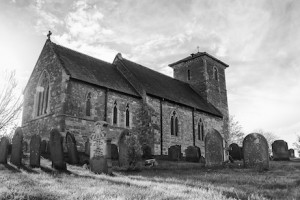

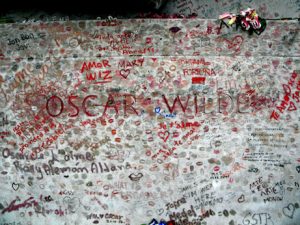

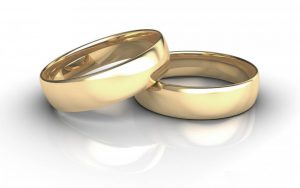
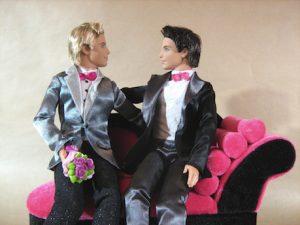
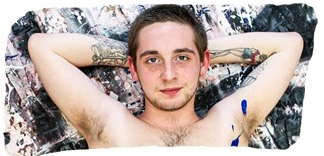
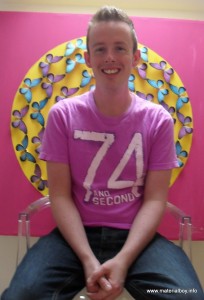
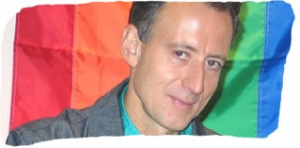
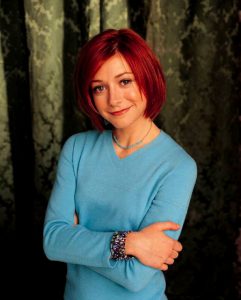
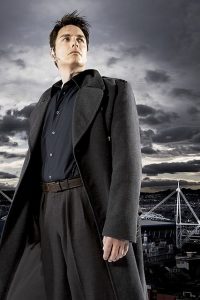
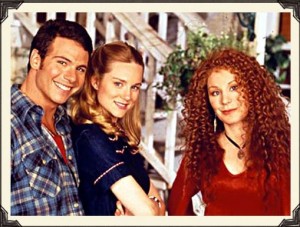


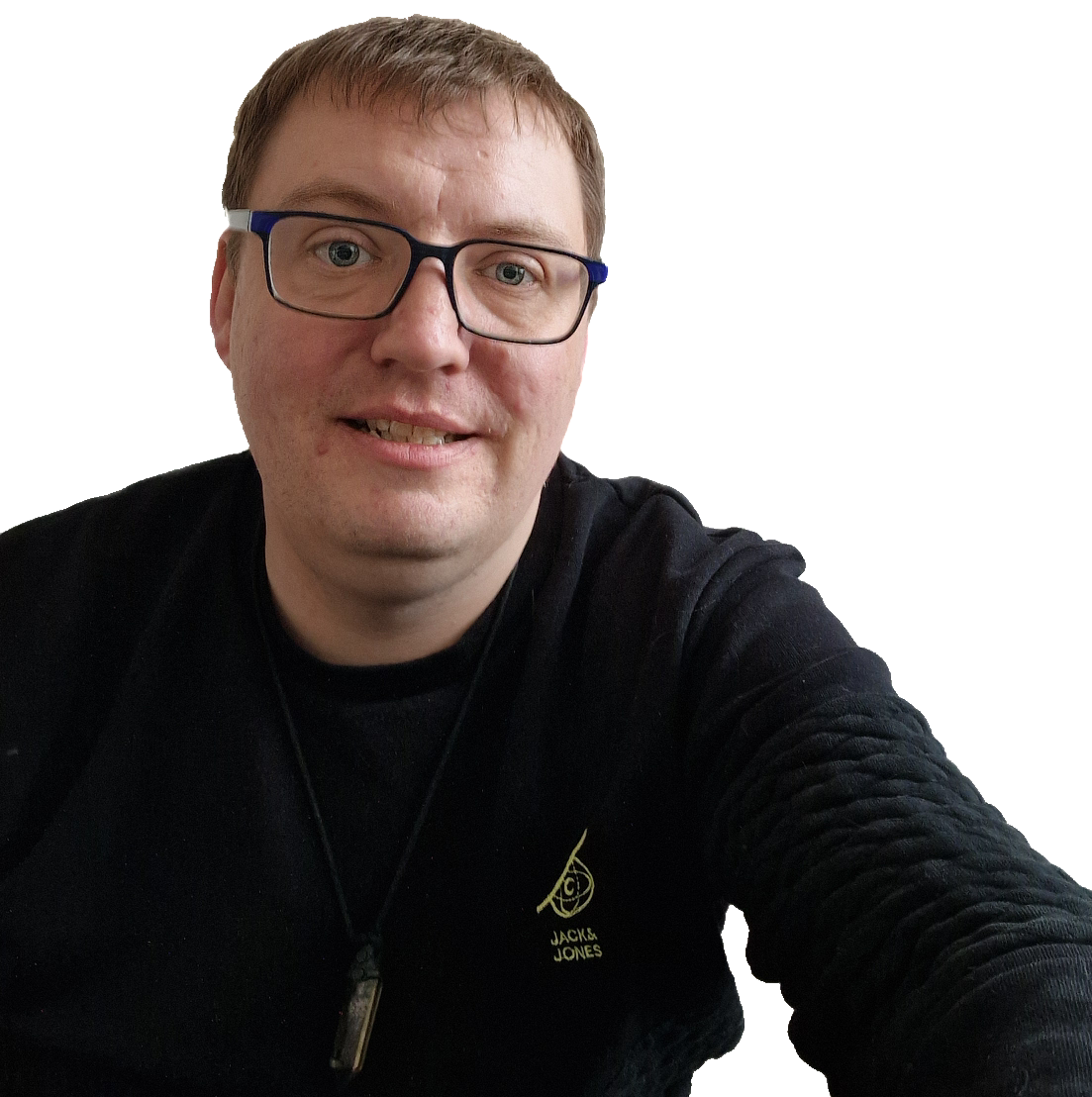
A great introductory article on candle magic :)
Hi Sofia, Thanks for the comment. I bought that in Glastonbury and he was a real find. I bought him…
Hi! I know this was posted ages ago and so a response may be rare but my dad has been…
Hi Ruth, Thanks for the comment. He might well have been. A x
Hi! Watching video and interviews with Charlie Watt, it had me wondering if he might have had Aspergers/ been on…